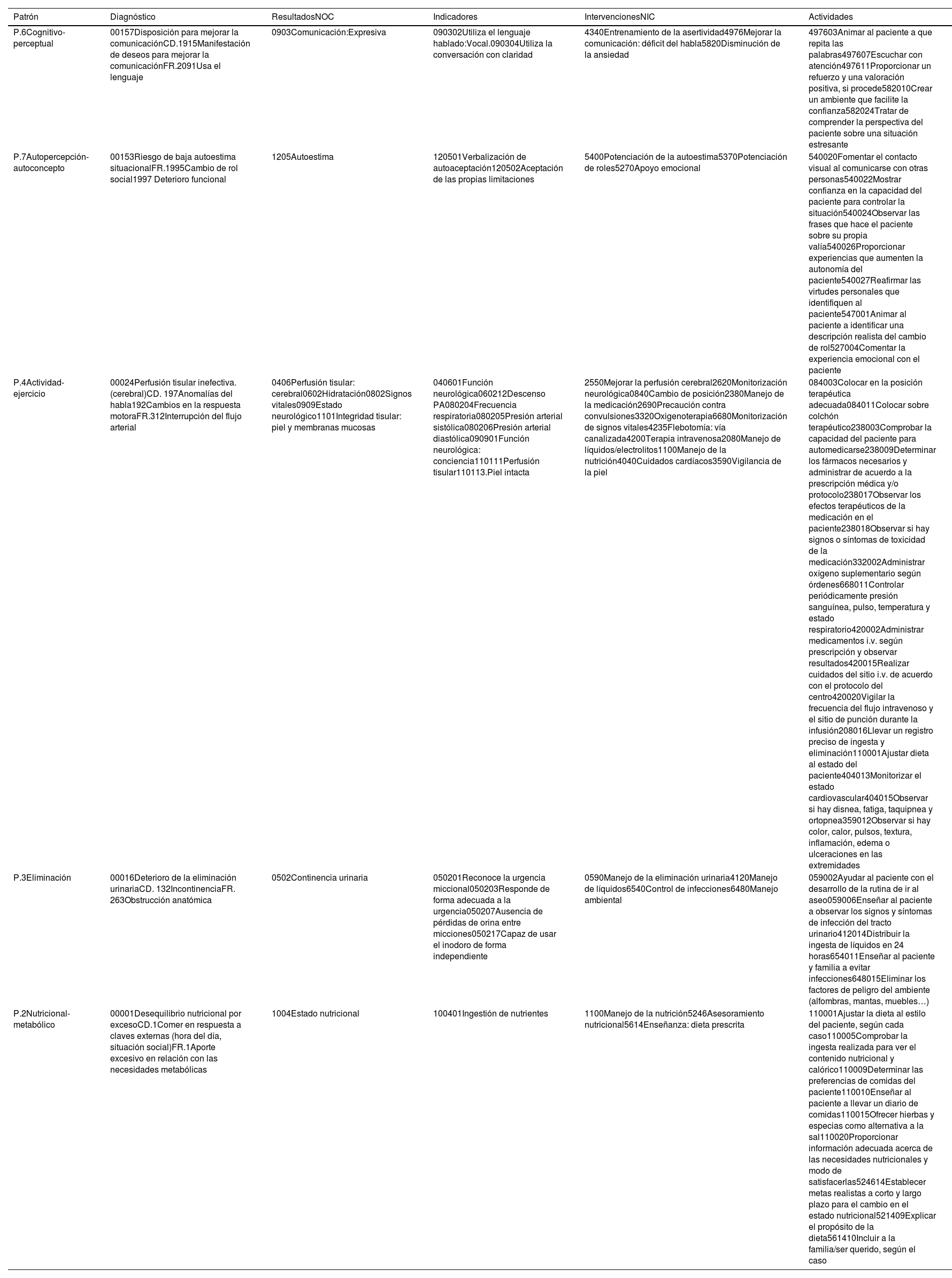El síndrome del acento extranjero (SAE) es una alteración adquirida del habla por una lesión del sistema nervioso central, caracterizada por la aparición de un acento extranjero al hablar la lengua materna.
El objetivo es describir un caso de SAE como forma de presentación de un ictus.
DesarrolloVarón, 72 años, español, con cardiopatía isquémica, dislipemia, EPOC. Autónomo para las actividades de la vida diaria. Ingresó por dolor torácico de pequeños esfuerzos. Presentaba dificultad para responder y obedecer órdenes, sentía que el acento y velocidad del habla eran diferentes. Sus familiares dijeron que hablaba como los ingleses, pero en español.
En la exploración neurológica se mostró consciente, orientado, obedecía órdenes, no disartria. Lenguaje claro, fluido e inteligible, con alteración de entonación y ritmo. Paresia facial derecha leve.
ResultadosSe desarrolló un plan de cuidados basado en patrones funcionales de Gordon, con diagnósticos NANDA, intervenciones (NIC) y resultados esperados (NOC). Debido a la rareza del caso está justificado establecer un plan de cuidados individualizado, obteniéndose 7 diagnósticos de enfermería y 12 intervenciones de enfermería con sus respectivos NOC.
El juicio clínico fue de ictus isquémico tipo minor de origen cardioembólico. La evolución fue favorable, a los 3 meses recuperó el acento normal y no refería alteración del habla ni problema de identidad.
ConclusiónEl SAE es un síndrome infrecuente, que puede generar conflictos de identidad si no remite.
Consideramos necesario conocer este síndrome para que pueda ser reconocido precozmente, y poder ofrecer un correcto abordaje por parte de enfermería que garantice unos cuidados de calidad y apoyo psicológico.
Foreign Accent Syndrome (FAS) is an acquired speech disorder due to a lesion of the central nervous system, characterized by the appearance of a foreign accent when speaking the native language. The objective is to describe a case of SAE as a form of presentation of a stroke.
DevelopmentMale, 72 years old, Spanish, with ischemic heart disease, dyslipidemia, COPD. Autonomous for Activities of Daily Living. Admitted for chest pain on slight exertion. Presents difficulty in responding and obeying orders, feels that the accent and speed of speech are different. His relatives say that he speaks like the English, but in Spanish.
In neurological examination conscious, oriented, obeys orders, no dysarthria. Language is clear, fluent and intelligible, with alteration of intonation and rhythm. Mild right facial paresis.
ResultsA care plan was developed based on Gordon's functional patterns, with NANDA diagnoses, interventions (NIC) and expected outcomes (NOC). Due to the rarity of the case it is justified to establish an individualized care plan, obtaining 7 nursing diagnoses and 12 nursing interventions with their respective NOC.
The Clinical Judgment was of ischemic stroke of cardioembolic origin. The evolution was favorable, after 3 months she recovered her normal accent and did not report any speech alteration or identity problems.
ConclusionSAE is an infrequent syndrome, which can generate identity conflicts if it does not subside.
We consider it necessary to be aware of this syndrome so that it can be recognized early, and to be able to offer a correct nursing approach that guarantees quality care and psychological support.
Artículo
Diríjase al área privada de socios de la web de la SEDENE, (https://sedene.com/revista-de-sedene/ ) y autentifíquese.
Comprando el artículo el PDF del mismo podrá ser descargado
Precio 19,34 €
Comprar ahora





